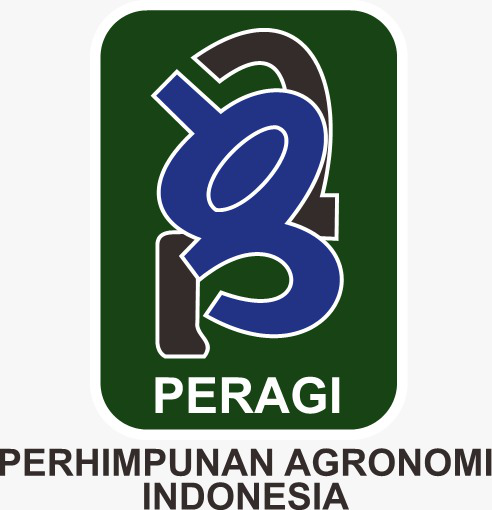Analysis Nutrient Content of Stem Banana Compost as Organic Fertilizer
Abstract
Organic fertilizer is a type of fertilizer obtained from natural organic materials. This organic material is in the form of plant residues, animal waste, organic waste and other organic materials which are processed into fertilizer. One type of organic fertilizer that farmers can use is compost made from organic materials derived from banana stem waste. Banana stem waste has a high organic content is 83%, with a lignin and cellulose content of around 15-20% and hemicellulose around 14.6%. The aim of the research was to determine the nutrient content of banana stem compost. Composting was carried out using a Randomized Block Design with 5 repetitions. Sampling of mature compost was carried out in a composite manner by taking 80 grams from each replication and collecting them for a total of 400 grams. The samples are then analyzed at the Central Plantation Services (CPS) laboratory. Parameters tested: water content, % N, % P2O5, % K2O, % Mg, % Ca, organic C and pH. Data analysis was carried out descriptively by comparing the quantity and quality parameters of compost according to Indonesian National Standard No. 197030-2004. Through research, the results obtained were 38.4% water content, N (0.89%), P2O5 (0.40%), K2O (1.63%), Mg (0.38%), Ca (0.99%) , C-organic (29.4%) and pH (7.97%). The chemical properties of the banana stem compost obtained meet the national compost quality standards SNI No. 197030-2004
Downloads
References
Dewi, Y.S. dan Treesnowati. 2012. Pengolahan sampah skala rumah tangga menggunakan metode composting. Jurnal Ilmiah Fakultas Teknik LIMIT’S. 8(2): 35-48.
Hidayati, Y,A. D.Z. Badrussaman, E.T. Marlina, dan E. Harlia. Analisis Ca, Mg, Ktk Dalam Kompos Dari Feses Kambing Perah, Jerami, Limbah Pakan Hijauan. Jurnal Ziraa’ah, 48 (1) : 61-67.
Kaswinarni, F. 2016. Pengaruh Penambahan Variasi Starter pada Pengomposan Sampah Organik Pasar terhadap Kadar N Total, N Tersedia dan C/N Rasio, Prosiding Seminar Nasional Masif II, 152-155.
Kurnia, V.C., S. Sumiyati, G. Samudro. 2017. Pengaruh Kadar Air Terhadap Hasil Pengomposan Sampah Organik Dengan Metode Open Windrow. Jurnal Teknik Mesin (JTM), 6 : 119-123.
Pereira, da S.A., B.L. Carlos., F.J. Cezar., R. Ralisch., M. Hungria., and G.M. De Fatima, 2014. Soil Structure and Its Influence On Microbial Biomass In Different Soil and Crop Management Systems. Soil & Tillage Research, Vol. 142, pp. 42–53.
Simamora, D.R.P.,S. Sitorus dan D. Tarigan. 2022. Analisis Kadar Magnesium (Mg) Total Dan Mangan (Mn) Pada Penambahan EM4 Terhadap Pupuk Kompos (Sampah Kulit Kedelai - Kacang Panjang). Prosiding Seminar Nasional Kimia 2022. Jurusan Kimia FMIPA UNMUL.
Surtinah, 2013. Pengujian Kandungan Unsur Hara Dalam Kompos yang Berasal dari Serasah Tanaman Jagung Manis (Zea mays). Jurnal Ilmiah Pertanian. 11 (1) : 11-17
Wirosoedarmo, R., Cesaria, R.Y., dan Suharto, B. (2019), Pengaruh Penggunaan Starter Terhadap KualitasFermentasi Limbah Cair Tapioka Sebagai Alternatif Pupuk Cair, Jurnal Sumberdaya Alam dan Lingkungan, 8-14
Zhang, C, Li, J, Liu, C, Liu,X, Wang, J, Li, S, Fan, G, dan Zhang, L. 2013. Alkaine Pretreatment For Enhancement of Biogas Production from Banana Stem and Swine Manure by Anaerobic Codigestion. Bioresource Technology, 149: 353-358.
Copyright (c) 2024 Sari Rukmana, Okta Sagita Chan, Benny Satria Achmad, Ferdinant dan Rovel Lando Fambari

This work is licensed under a Creative Commons Attribution 4.0 International License.
Authors who publish with Jurnal Agronomi Tanaman Tropika (JUATIKA) agree to the following terms:
Authors retain copyright and grant the Jurnal Agronomi Tanaman Tropika (JUATIKA) right of first publication with the work simultaneously licensed under a Creative Commons Attribution License (CC BY 4.0) that allows others to share (copy and redistribute the material in any medium or format) and adapt (remix, transform, and build upon the material for any purpose, even commercially) with an acknowledgment of the work's authorship and initial publication in Jurnal Agronomi Tanaman Tropika (JUATIKA).
Authors are able to enter into separate, additional contractual arrangements for the non-exclusive distribution of the journal's published version of the work (e.g., post it to an institutional repository or publish it in a book), with an acknowledgment of its initial publication in Jurnal Agronomi Tanaman Tropika (JUATIKA). Authors are permitted and encouraged to post their work online (e.g., in institutional repositories or on their website) prior to and during the submission process, as it can lead to productive exchanges, as well as earlier and greater citation of published work.







 More Information
More Information



